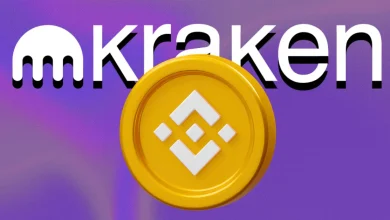
Vitalik Buterin supports the rise of ETH treasury companies, saying they make Ethereum more accessible to investors.
He warns that excessive leverage could turn treasuries into an “overleveraged game” and risk Ethereum’s stability.
ETH treasuries have grown to $11.77B in assets, helping fuel a 160% price surge in 2025.
Ethereum co-founder Vitalik Buterin has welcomed the rise of ETH treasury companies, saying they open the door for a broader range of investors to gain exposure to ETH. However, he cautioned that the trend could backfire if it turns into an “overleveraged game.”
Speaking on the Bankless podcast, Buterin noted that these treasury firms, public companies that buy and hold ETH, offer “valuable services” and provide “more options” for investors who may not want or be able to hold the token directly.
Notably, ETH has surged over 160% in 2025, but Vitalik Buterin warns that treasury companies must manage their holdings responsibly to maintain this momentum and avoid the kind of collapses seen in past crypto booms.
The Rise of ETH Treasuries
Over the past year, crypto treasury companies have become a hot play on Wall Street, mirroring the strategy of Bitcoin treasury holders like MicroStrategy. By pooling investor capital to buy and hold ETH, these firms create indirect exposure for traders through publicly traded shares.
The sector has already ballooned to $11.77 billion in assets. BitMine Immersion Technologies leads the pack with 833,100 ETH worth $3.2 billion, followed by SharpLink Gaming with $2 billion, and The Ether Machine with $1.34 billion. The Ethereum Foundation and PulseChain round out the top five largest holders. Meanwhile, Fundamental Global has filed with the SEC to launch a new $5 billion Ethereum treasury fund, signaling rising institutional demand for ETH exposure.
In short, ETH treasuries can boost Ethereum adoption and price by putting large amounts of Ether in the hands of public companies and investment firms, which makes it easier for traditional investors to get exposure without directly buying and managing crypto.
Leverage: The Potential Achilles’ Heel
While Buterin is optimistic, he also warned of a worst-case scenario in which excessive leverage could trigger a chain reaction of forced liquidations. A sharp price drop, he said, could lead to margin calls, further sell-offs, and ultimately a collapse in credibility for Ethereum.
“If you woke me up three years from now and told me that treasuries led to the downfall of ETH… my guess for why would basically be that somehow they turned it into an overleveraged game,” Buterin said.
Still, he expressed confidence that current ETH treasury companies are more disciplined than the reckless risk-taking seen in past collapses, quipping: “These are not Do Kwon followers.”
ETH’s Price Comeback
The growth of ETH treasury holdings has coincided with a strong market recovery for the token. After plunging to $1,470 in April, ETH has surged more than 160% to around $3,870. Analysts say this influx of treasury demand has been a major factor behind Ethereum’s price rally, helping it close the performance gap with Bitcoin and Solana.
For now, the future of ETH treasuries looks bright, but Buterin’s warning is clear: success will depend on resisting the temptation to overextend in pursuit of bigger returns.
Never Miss a Beat in the Crypto World!
Stay ahead with breaking news, expert analysis, and real-time updates on the latest trends in Bitcoin, altcoins, DeFi, NFTs, and more.
FAQs
It’s worth about $11.77B, led by BitMine Immersion Technologies with 833,100 ETH.
ETH surged over 160% from $1,470 in April to around $3,870, partly driven by treasury demand.
He says they expand ETH access for investors who can’t or don’t want to hold crypto directly.








